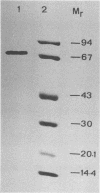Abstract
Brettanomyces lambicus was isolated and identified from a typical overattenuating Belgian lambic beer and exhibited extracellular and intracellular α-glucosidase activities. Production of the intracellular enzyme was higher than production of the extracellular enzyme, and localization studies showed that the intracellular α-glucosidase is mostly soluble and partially cell wall bound. Both intracellular and extracellular enzymes were purified by ammonium sulfate precipitation, gel filtration (Sephadex G-150, Sephadex G-200, Ultrogel AcA-44), and ion-exchange chromatography (sulfopropyl-Sephadex C-50, (carboxymethyl-Sephadex C-50). The intracellular α-glucosidase exhibited optimum activity at 39°C and pH 6.2. The extracellular enzyme exhibited optimum catalytic activity at 40°C and pH 6.0. The molecular masses of purified intracellular and extracellular α-glucosidases, as determined by sodium dodecyl sulfate-polyacrylamide gel electrophoresis, were 72,500 and 77,250, respectively. For both enzymes there was a decrease in the rate of hydrolysis with an increase in the degree of polymerization, and both enzymes hydrolyzed dextrins isolated from lambic wort (degrees of polymerization, 3 to 9 and more than 9). The Km values for p-nitrophenyl-α-d-glucopyranoside, maltose, and maltotriose for the intracellular enzyme were 0.9, 3.4, and 3.7 mM, respectively. The Ki values for both enzymes were between 28.5 and 57 μM for acarbose and between 7.45 and 15.7 mM for Tris. These enzymes are probably involved in the overattenuation of spontaneously fermented lambic beer.
Full text
PDF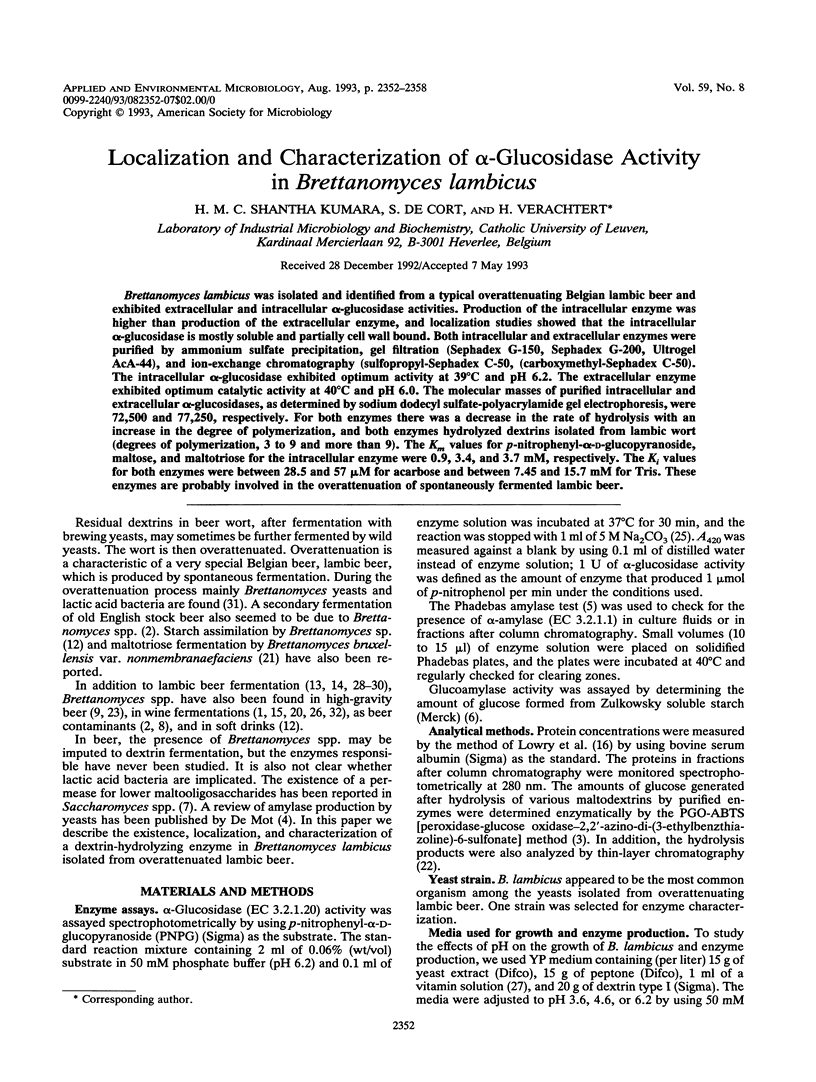
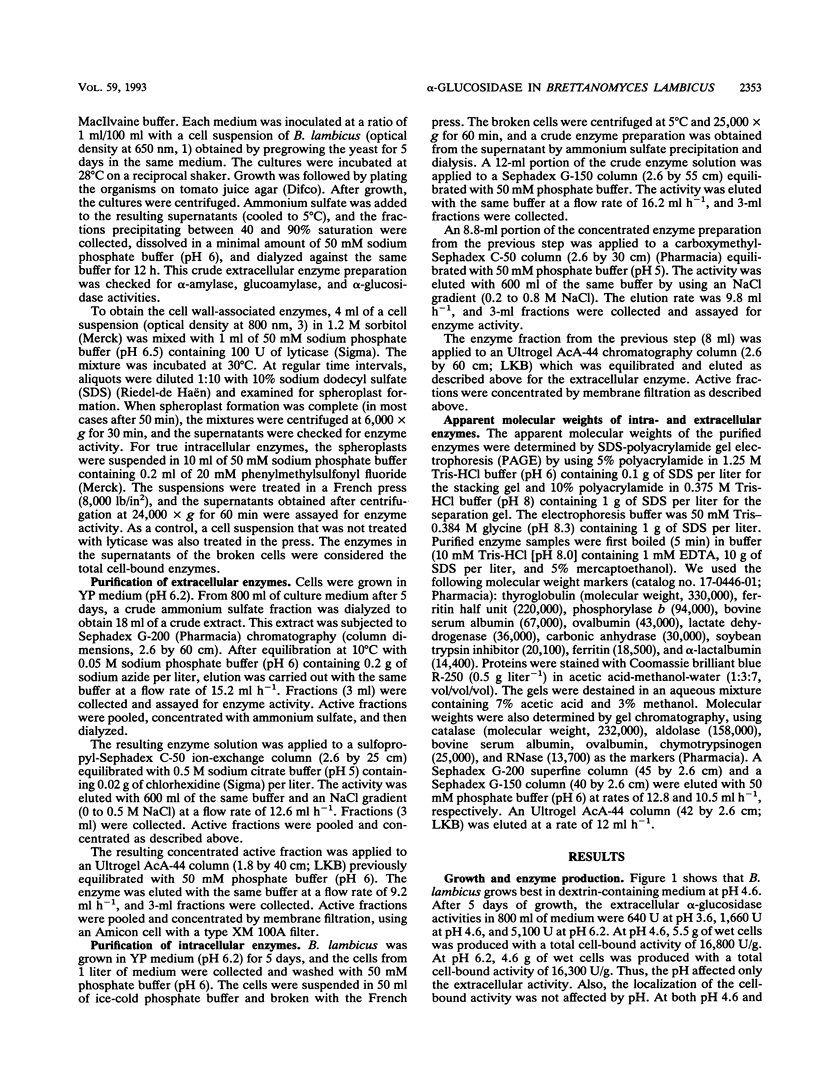
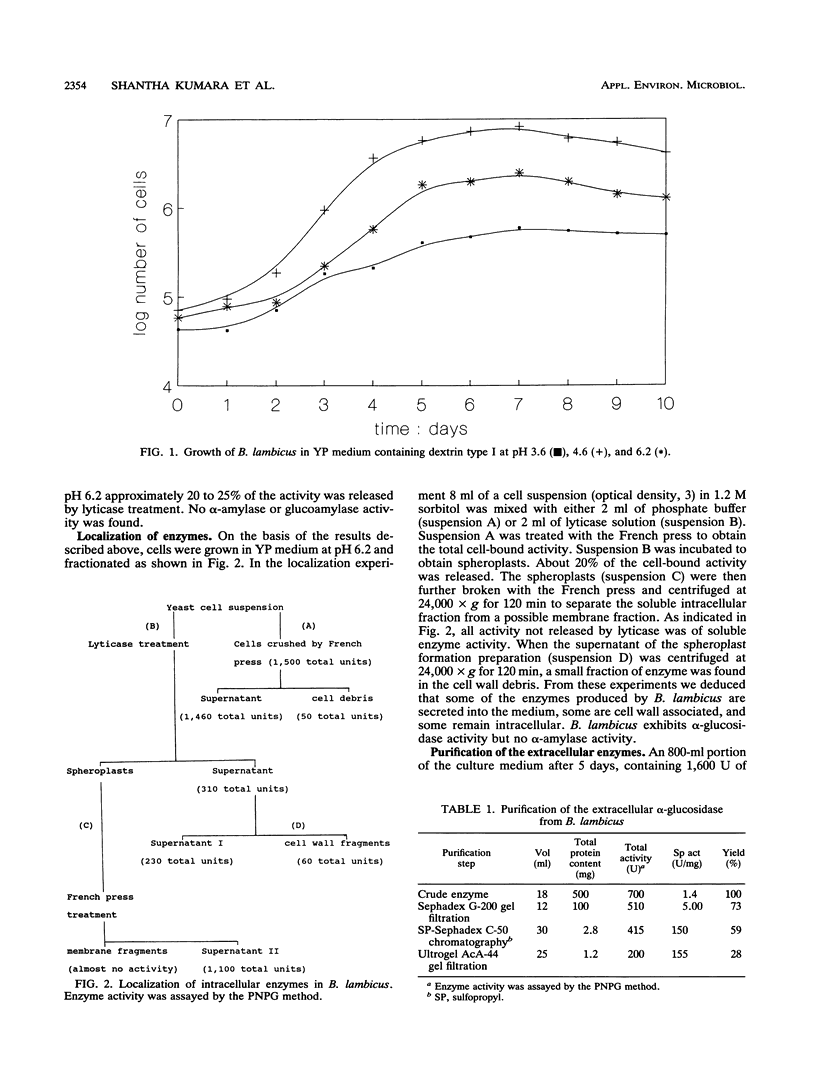

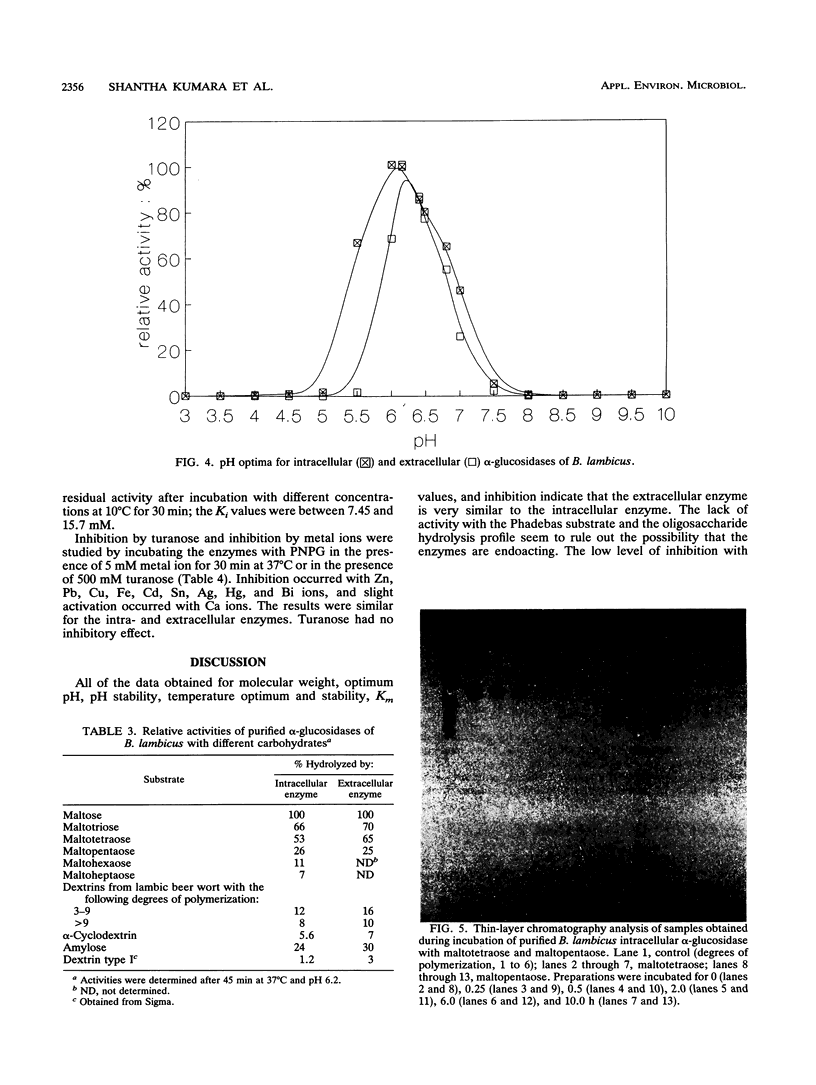
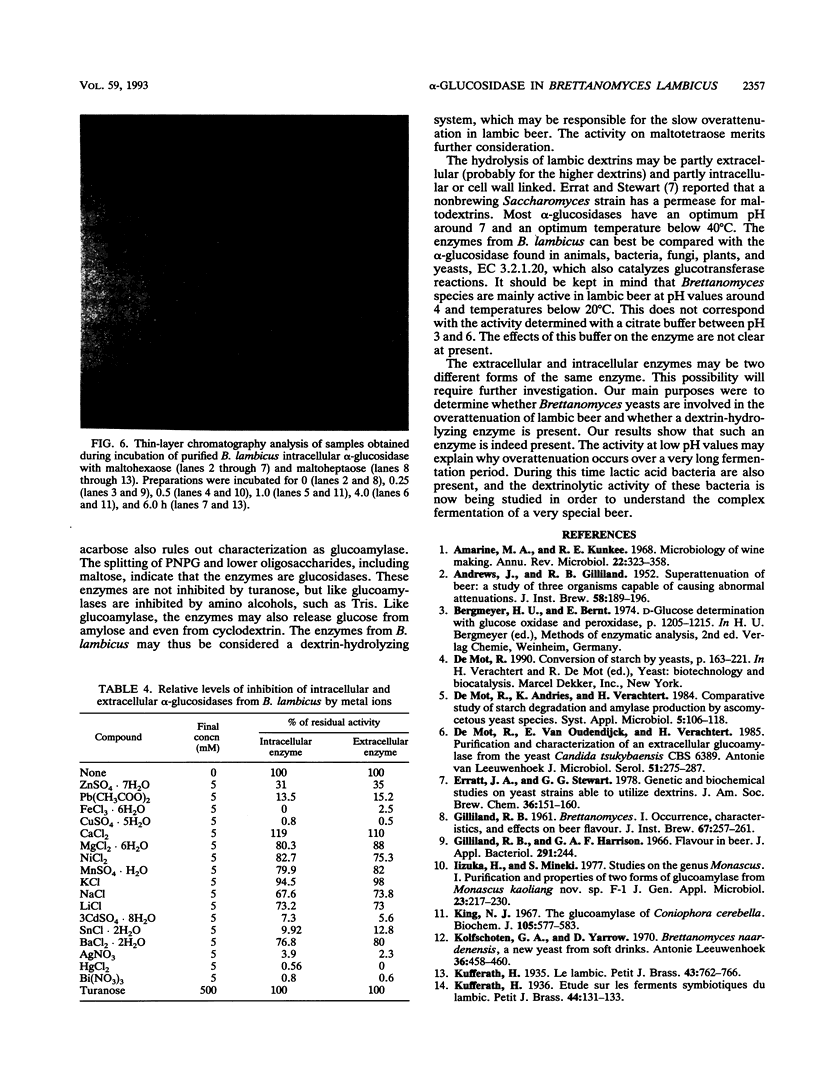
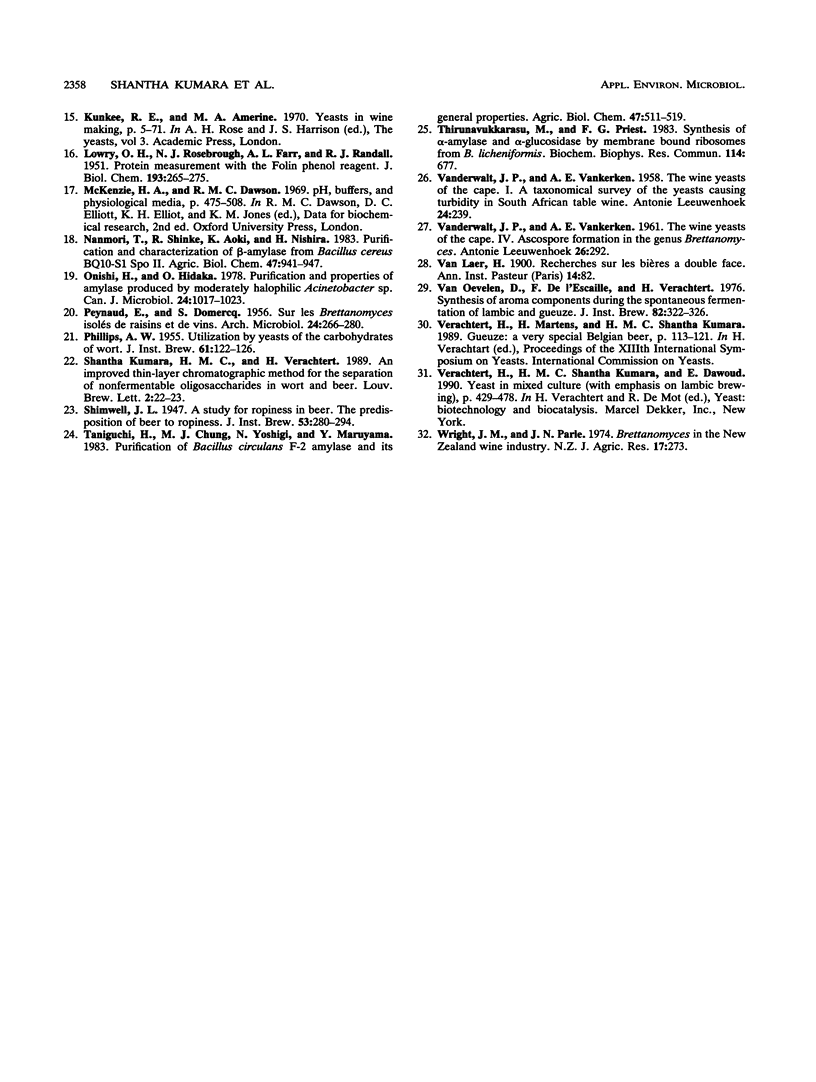
Images in this article
Selected References
These references are in PubMed. This may not be the complete list of references from this article.
- Amerine M. A., Kunker R. E. Micobiology of winemaking. Annu Rev Microbiol. 1968;22:323–358. doi: 10.1146/annurev.mi.22.100168.001543. [DOI] [PubMed] [Google Scholar]
- De Mot R., Van Oudendijck E., Verachtert H. Purification and characterization of an extracellular glucoamylase from the yeast Candida tsukubaensis CBS 6389. Antonie Van Leeuwenhoek. 1985;51(3):275–287. doi: 10.1007/BF02439937. [DOI] [PubMed] [Google Scholar]
- Gilliland R. B., Harrison G. A. Flavour in beer. J Appl Bacteriol. 1966 Aug;29(2):244–252. doi: 10.1111/j.1365-2672.1966.tb03474.x. [DOI] [PubMed] [Google Scholar]
- King N. J. The glucoamylase of Coniophora cerebella. Biochem J. 1967 Nov;105(2):577–583. doi: 10.1042/bj1050577. [DOI] [PMC free article] [PubMed] [Google Scholar]
- Kolfschoten G. A., Yarrow D. Brettanomyces naardenensis, a new yeast from soft drinks. Antonie Van Leeuwenhoek. 1970;36(3):458–460. doi: 10.1007/BF02069047. [DOI] [PubMed] [Google Scholar]
- LOWRY O. H., ROSEBROUGH N. J., FARR A. L., RANDALL R. J. Protein measurement with the Folin phenol reagent. J Biol Chem. 1951 Nov;193(1):265–275. [PubMed] [Google Scholar]
- Onishi H., Hidaka O. Purification and properties of amylase produced by a moderately halophilic Acinetobacter sp. Can J Microbiol. 1978 Sep;24(9):1017–1023. doi: 10.1139/m78-169. [DOI] [PubMed] [Google Scholar]
- PEYNAUD E., DOMERCQ S. Sur les Brettanomyces isolés de raisins et de vins. Arch Mikrobiol. 1956;24(3):266–280. [PubMed] [Google Scholar]
- Thirunavukkarasu M., Priest F. G. Synthesis of alpha-amylase and alpha-glucosidase by membrane bound ribosomes from Bacillus licheniformis. Biochem Biophys Res Commun. 1983 Jul 29;114(2):677–683. doi: 10.1016/0006-291x(83)90834-3. [DOI] [PubMed] [Google Scholar]



